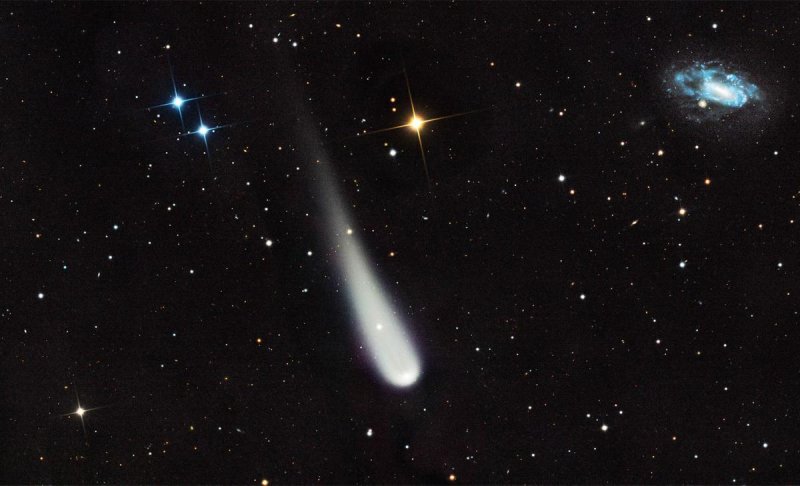
Most anticipated' comet of 2024 returns this weekend after 80,000 years

The last individuals to witness this celestial spectacle were our ancestors who first ventured out of Africa.
The comet, appearing as a faint, star-like smudge trailed by a hazy tail, should be visible just before dawn on four consecutive mornings – from Friday to Monday.
It’s important to note that comet C/2023 A3 was only discovered last year, yet scientists have determined that it visited our planet around 80,000 years ago. This estimate is based on its elliptical trajectory.Matthew Dominick, a NASA astronaut currently aboard the International Space Station, shared a captivating video of the comet, giving us a unique perspective.
The comet tail is noticeably longer each day. Pause the video at about 15 seconds…you can see the tail of the comet looks like it is bending,” noted Dominick.
“The atmosphere is more dense the closer you get to Earth. Changes in the density of the atmosphere change the refractive index and thus make the comet tail appear bent.”
“I was in my crew quarters reviewing the imagery when I first saw the bend in the comet’s tail. I did not see it real time when taking the images.”
Comet C/2023 A3 will make it closest approach to the sun on September 27. The comet will then spin around the sun and head back toward Earth.
“If this comet survives its passage by the sun, and if the amount of gas and dust it gives off does not decrease significantly, this might be one of the best comets in a long time,” said NASA’s Gordon Johnston.
“If it strongly scatters sunlight towards the Earth it might even be visible in the glow of dusk just after its closest approach to Earth on October 12.”
When the comet swings by the sun on September 27, it is expected to light up spectacularly. The comet’s diameter can stretch up to 25 miles.
Tsuchinshan will be faintly visible with a telescope in the pre-dawn hours through October 4th across most of the United States.
According to Johnston, the comet will be hidden through October 11, but will reappear in the evening sky just as it makes its closest pass to Earth on October 12.


